
© Christian Leiber. (Click image for larger version)
Paris Opera Ballet
Giselle
Sydney, Capitol Theatre
29 January – 9 February 2013
www.operadeparis.fr
www.parisoperaballet.com.au
capitoltheatre.com.au
The Capitol Theatre in Sydney, built as a cinema on the brink of the great depression, has seen some extraordinary performers and companies in its day, among them the Royal Ballet, Nederlands Dans Theater, White Oak, starring Mikhail Baryshnikov, Darcey Bussell, Sylvie Guillem, Elvis Costello and Jerry Seinfeld, not forgetting the movie stars of the first talkies to be screened there in 1928/29, with the (then) comic titles, Beware of Bachelors and Ladies Like Brutes.
For the past few days, the theatre was home to the Paris Opera Ballet and for most performances in the 13-performance season, the Capitol’s over-adorned auditorium – complete with statuary and twinkling star lights in the ceiling – was filled to its 2000 seat capacity.
The company presented just one ballet, Giselle, with the glorious sets and costumes originally designed by Alexandre Benois for the Paris Opera Ballet in 1924.
Paris Opera Ballet – Giselle Wilis: Marie-Agnes Gillot, Emilie Cozette, Laura Hecquet
This production – one that toured to Chicago, Washington (review) and New York (review) last year – was adapted, from the Coralli-Perrot-Petipa choreography, by Patrice Bart and Eugene Polyakov in 1991 and revived in 1998 with Benois’ designs realised by Silvano Mattei (sets) and Claudie Gastine (costumes.)
The touring company was led by nine of the company’s 18 etoiles, with the hardest working being Mathieu Ganio who danced Albrecht a total of six times. Eleven etoiles were to dance in Sydney but injuries kept Aurelie Dupont and Nicolas Le Riche at home. And while Laura Hecquet was down to dance in the peasant pas de deux on the opening night, and as Myrtha three times, an injury meant she danced none of those performances and returned home early in the season.
The only other mishaps in an otherwise happy season had nothing to do with the dancers. During the interval on the first matinee of the season, on 2 February, an overheated battery created a cloud of white smoke at the back of the theatre. The audience and dancers in costume were evacuated to nearby Belmore Park. After fire brigades dealt with the problem, Act II began an hour late, appropriately with billows of dry ice representing the mist of the wilis’ habitat.
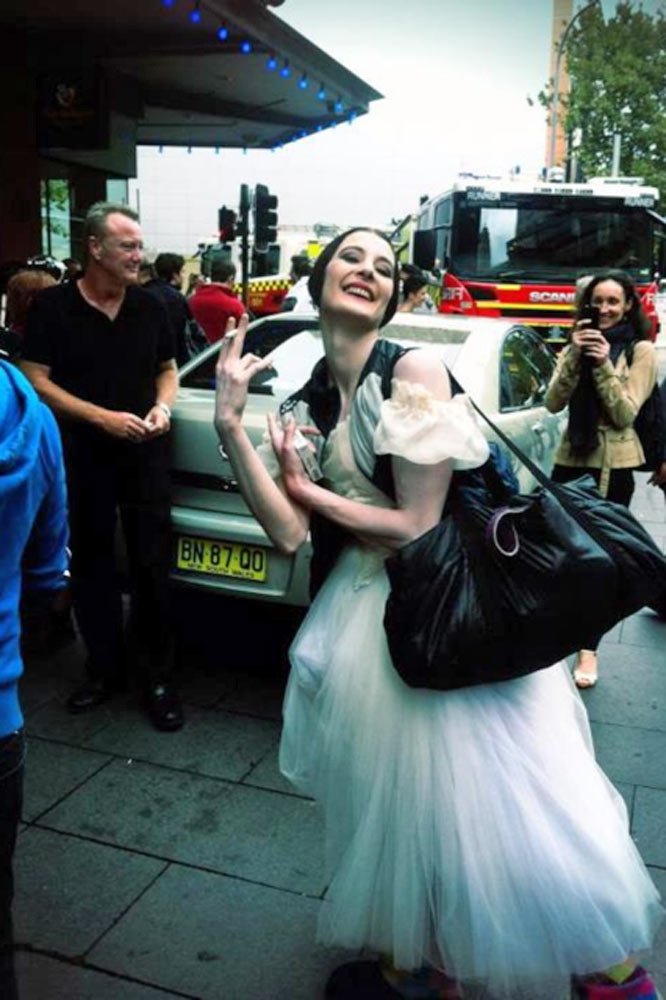
© POB Australian Tour. (Click image for larger version)
The dress rehearsal, we heard, did not go well, with dancers unhappy with the Sydney Lyric Orchestra, comprising musicians from around Australia, and conducted by the Belgian guest conductor, Koen Kessels. With the dancers arriving only three days before opening night, there was little time for a connection to be made between dancers and orchestra. As the season progressed, so did the orchestra improve and become more cohesive.
During the season, and over five nights, I saw each of the five Giselles – Dorothee Gilbert, Myriam Ould-Braham, Ludmila Pagliero, Isabelle Ciaravola and Melanie Hurel, four Albrechts, Mathieu Ganio, Karl Paquette, Stephane Bullion and Florian Magnenet, and four Myrthas – Marie-Agnes Gillot, Emily Cozette, Nolwenn Daniel and Heloise Bourdon. I’m not sure if any of these illustrious dancers – or any of the hardworking soloists and corps – ever unpacked their swimsuits as (a) the rain in the first few days of the tour looked as though we might need the urgent help of Noah’s ark-building team and (b) there was little time for Bondi beach with those 13 performances in 11 days.
Brigitte Lefevre, the company’s director of dance, arrived from Paris on 4 February and over the next few evenings watched the shows from the stalls alongside ballet master, Laurent Hilaire, and the ballet mistresses (whose heads bobbed this way and that as they mentally danced Giselle’s steps, particularly on the evenings that Pagliero and Ould-Braham made their debuts.
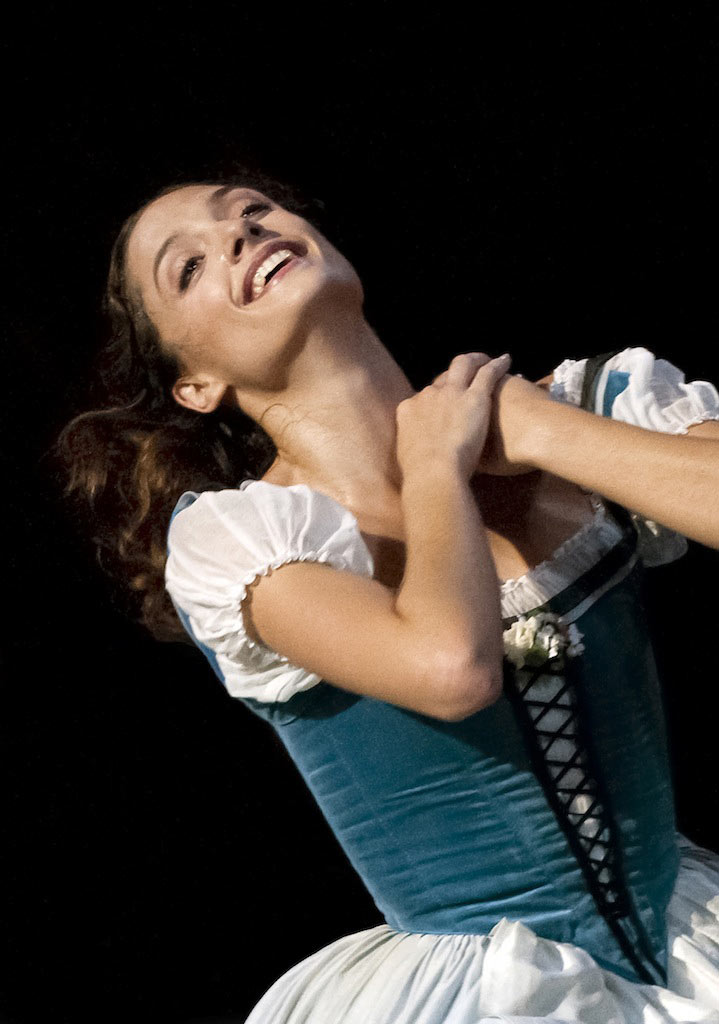
© Michel Lidvac. (Click image for larger version)
The season opened with Gilbert with Ganio, both outgoing, confident, faultless in their technique with Gilbert a mischievous Giselle, more playful than shy and wary in Act 1, and Ganio more ardent in his flirtation than many more regal and caddish Albrechts. Ganio’s physique and technique represent the princely prototype – long legs, scissor-like beats, impressive elevation, neatness and finesse in every step. He nails every fifth in double tours. His is a textbook example of the French style. Some nitpickers believe that this exactitude comes at the expense of his interpretation. I don’t agree and thought Ganio’s final moments when he rests by Giselle’s grave (after she rescues him from death) was one of the most poignant and compelling moments of the season.

© Sebastien Mathe. (Click image for larger version)
Giselle veterans (seen it all, and many times), can still be moved by the tragedy but those moments are rare. For me, they include Alina Cojocaru’s performance in Sydney in 2002 with the Royal Ballet and now, Ganio’s final scene in this month’s season.
On opening night, 29 January, Emmaneul Thibault danced the peasant pas with Melanie Hurel – another textbook example of very fine technique with Thibault the most generous of dancers, his big eyes expressing an ebullience that transcended the difficult series of beats and jumps of the peasant pas – a navigational nightmare for all but the most assured.
Marie-Agnes Gillot as Myrtha traversed the stage like no other Myrtha of the season despite the fact, as we heard later, that she was unhappy with the orchestra on opening night.
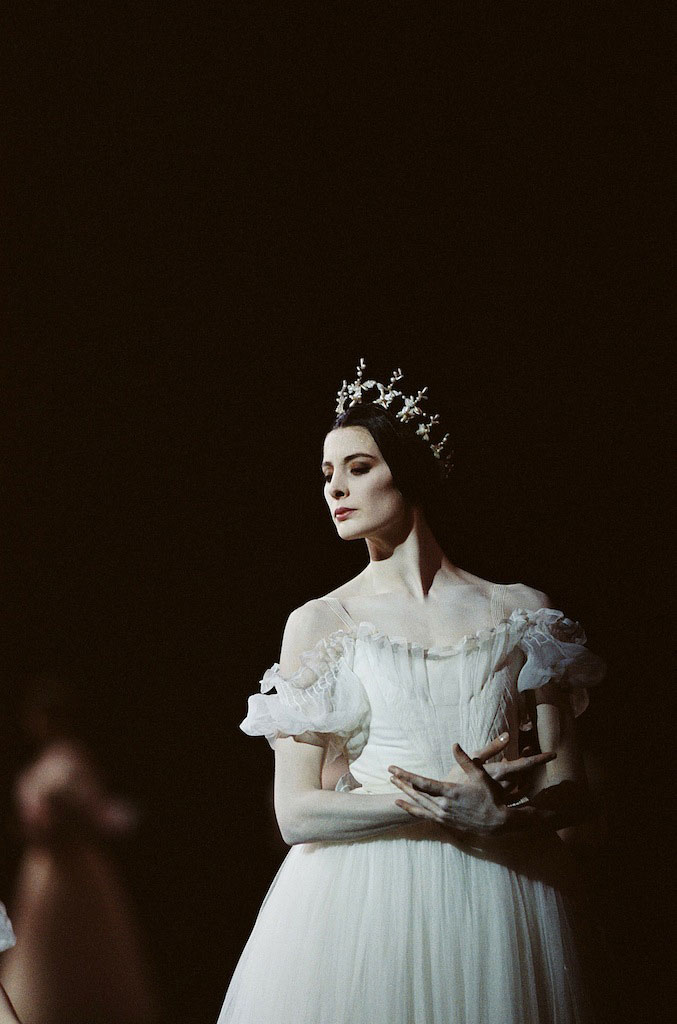
© Icare. (Click image for larger version)
Born to be the she-who-must-be-obeyed Queen of the Wilis her bourrées and those of Gilbert as Giselle in Act II were as rapid as ever I’ve seen them – a blur, the speed of a sewing machine needle going full throttle. (I recently learned that bourees can also be called ‘piétinées’ – literally, little stabbing steps used to crush something, such as men perhaps?)
The following night Isabelle Ciarovola was a restrained, rather distant Giselle in Act 1, not at ease in the solo with those stressful hops followed by faster-than-a-speeding-bullet pose pirouettes en manege. She danced the hops en diagonale in the opposite direction from any other Giselle I’ve ever seen and before she finished, Paquette stood from where he was seated downstage left to walk towards her. Was this planned, or an unforeseen moment?
Ciarovola’s feet are beautifully arched (she appears to wear rather soft pointe shoes), and her extensions are high. Maybe this flexibility leads to occasional ankle problems. I did not see her dance a second time so I don’t know if this was a one-off moment of insecurity.
In Act II, she was the Romantic ballerina incarnate, the season’s Giselle most resembling the lithographs of the 19th century and the limpid beauty of the tragic Olga Spessivtseva, complete with tendril like arms and a lovely quality of stillness and calm among the storm of the imperious wilis.

© Julien Benhamou. (Click image for larger version)
Paquette was a boyish Albrecht, a strong partner, whose last dance (almost) to the death in Act II was powerful and moving.
Among the various casts for the peasant pas, one of the most charming performances was given by Charline Giezendanner who whizzed through the technical hurdles (among them pirouettes from a kneeling position) as if it was all a stroll on a summer’s day.
Emilie Cozette’s Myrtha, while more impassive than Gillot’s, was a study in stillness and extraordinarily long balances, as was the peformance of Nolwenn Daniel in the second week of the season.

© Julien Benhamou. (Click image for larger version)
Ludmila Pagliero, the first south American etoile of the Paris Opera Ballet, made her debut as Giselle on 4 February with Stephane Bullion as her Albrecht. With her long, elegant face and high cheekbones she is an elegant looking woman, yet she was able to interpret Giselle as a tender young girl, yet one with a dynamic strength that ignited her power-plus solo of Act 1 and her no-holds-barred mad scene. When, as Giselle, she earlier indicated that she was unwell, she fell sharply forward into Albrecht’s arms rather than making that dainty and ladylike backwards faint.
Bullion as Albrecht was the epitome of the Romantic hero. In Act II he did not manage (or try) to complete the arduous series of entrechats near the end of the dance-to-death solo forced on him by Myrtha, but whether one dances 32 fouettes as Odile in Swan Lake or 20-plus entrechats in Giselle is not, or course, as important as interpreting the essence of the character. In that, he succeeded, as did Florian Magnenet as Albrecht in his only performance (a matinee on the final day of the season).

© Michel Lidvac. (Click image for larger version)
In some ways, Magnenet (a premier danseur, as is his Giselle, Melanie Hurel) was the most believable of all the Albrechts. So does it matter that he didn’t manage all the landings in fifth in his double tours and so on? Is ballet such a demanding and picky art form that dancers must not only move us, make us laugh, cry and so on, but also meet the demands of squinty-eyed audience members who want everything as close to perfection as it can be? Probably yes, in the eyes of the powers that be at the POB.
Finally, all etoiles of the POB are exceptional dancers but, judging from her debut in Sydney, the newest etoile, Myriam Ould-Braham, may become one of the most feted of her generation, just as Agnes Letestu and Aurelie Dupont are of their generation. The fair-haired dancer’s Giselle on 5 February was remarkable. Her ebullience in Act I, her despair in the mad scene, and the integrity of her transformation to a wili, all indicate a great future for the dancer.
The corps de ballet was superb in its unison, in the line of their necks, the curve of their arms, the placement of their wrists and fingers and the softness of their landings. Strangely, the acoustics of the Capitol meant one could hardly detect the sound of the pointe shoes in the stalls, but in the circle, the landings could definitely be heard.
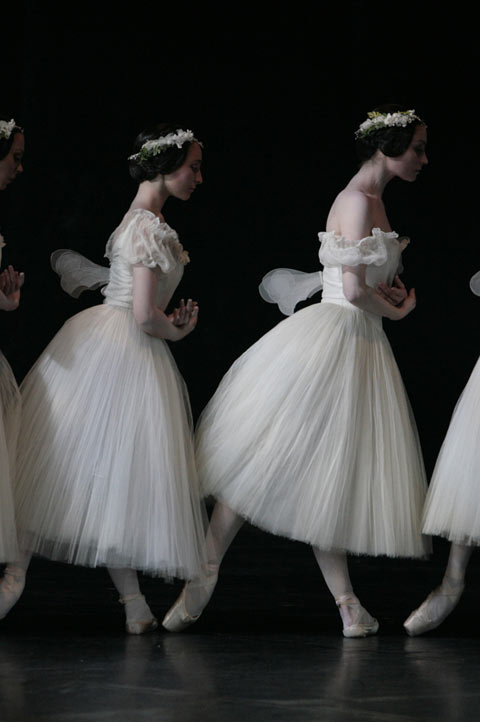
© Sebastien Mathé. (Click image for larger version)
Some production footnotes:
The peasant pas de deux is interspersed with the ensemble of Giselle’s eight girlfriends, becoming a mini-ballet within a ballet.
From the circle, the wilis’ long white tutus of Act II give the impression that they have a fluid life of their own. They float like snowdrifts when the dancers form clusters of six to a group or stand in their traditional lines.
The mime is particular and exact, with every gesture detailed and choreographed to the nth degree. Berthe’s mime depicts the tragedy that awaits Giselle with broad strokes and spine-chilling gestures.
Wilfred has his own particular way of moving. He runs jauntily, like a young boy, on his mission to save his master.
It’s pretty clear that Giselle is the illegitimate child of Berthe and the Prince of Courlande (as he is called in this production and was called in the original libretto), which would make her the half sister of Bathilde. At one stage the Prince looks intently as Giselle, holds her chin, then glances rather knowingly at Berthe. So, there’s a family pattern here. The royals like to dally with the ladies of the village.
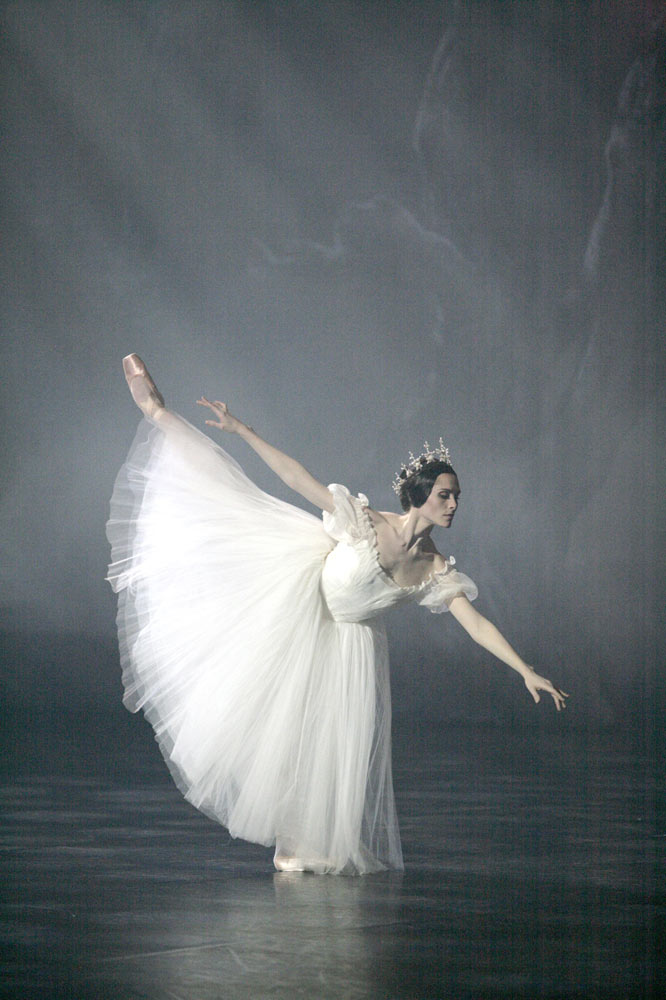
© Sebastien Mathe. (Click image for larger version)
In Act II the POB production opens with Hilarion’s friends, fellow gamekeepers, on stage, holding a lantern to light their way in the dark place where Giselle is buried. Their appearance is based on the 1841 libretto, according to Cyril Beaumont in his book, The Ballet Called Giselle.
The wilis’ footwork is remarkable in the way the dancers rise up from demi to three-quarter pointe and back again and the way in which they step on three-quarter pointe as they despatch Hilarion, danced by the handsome Audric Bezard in all but three performances. His fellow sujet, Yann Saiz, played the role on those three evenings in a rather more bitter and angry-from-the-outset manner.
By the end of the tour, the sun came out in more ways than one. In their few moments outside the Capitol Theatre the dancers could bask in the last days of a Sydney summer, and the promoters, Leo Schofield and Ian McRae, judged the tour a success both from the critical reaction and the fact that it did not break box office records but it did break even.
Those, like myself, who spent many hours immersed in the Giselle-fest, still miss the dancers from Paris. We hope this is not the last time they will make the 24 hour journey to Australia.













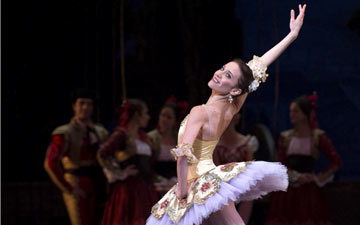
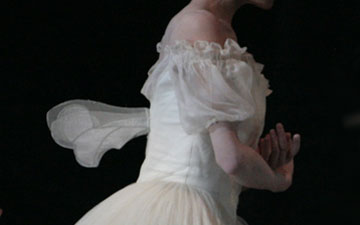
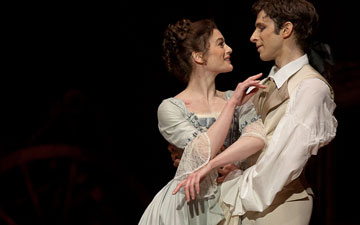
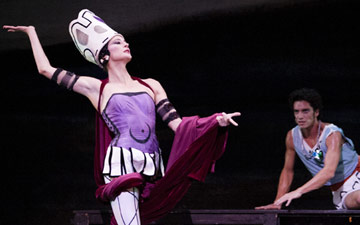
Thank you for the post about POB’s visit to Sydney I must admit I do agree about the rather poor orchestral effort, however, being a regular visiter to the company in Paris, I personally do not find the conductor Koen Kossels to be my favourite ballet conductor, he has the habit of not playiong complete barre’s or finishing them properly, very often the music is lacking in expression, far to loud and noisy with excess and prolonged use of the brass section. When you compare the Royal Opera House orchestra it is much more mellow and some of our well known conductors such as Ashley L:awrence.John Lanchberry, etc, are much more considerate of the dancers needs. David Coleman. Paul Connelly former conductors at the Paris Opera and Michel Queval with the Orchestre Colonne who sometimes accompany the ballet, provide a much highter standard of playing and sound from the pit. For the dancers to complain about their music would prove how bad rthe orchestra in this case really was. The music is a very important aspect of a ballet performance so it is a let down for the dancers and audience alike.
I didn’t get to see the Company this time around unfortunately, but enjoyed reading your reviews. I was particularly interested in reading your reaction to Mathieu Ganio and wonder if he is related to the dancer Denis Ganio who was in a wonderful partnership with the fabulous Dominique Khalfouni. They were with Roland Petit’s Ballet de Marseille, but POB beforehand I believe. Perhaps Mathieu is the son of. If so the tradition continues on! Would love to know.
Yes David Barclay, you are correct, Mathieu Ganio indeed is the son of Denys and his wife Dominique, he was one of the youngest members of the company to be made Etoile, He danced with Aurelie Dupont in La Sylphide, age about 18 years old, which is available on DVD. There is also his sister Marine Ganio who is younger than Mathieu, and has recently joined the company, and is beginning to make her way up the ranks. Nothing like keeping it in the family eh? I believe there is also a documentary on DVD about Mother and Son.